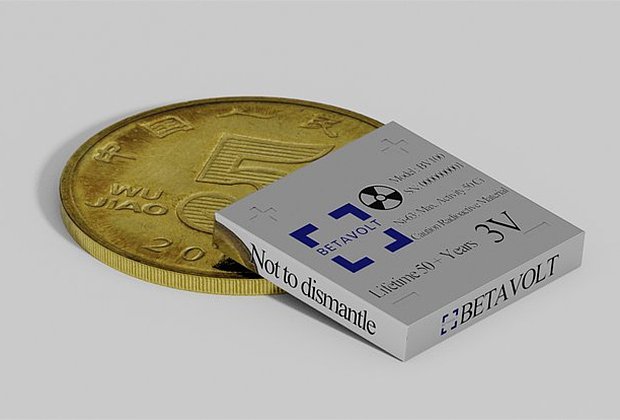Chinese startup Betavolt has created a new nuclear battery
Chinese startup Betavolt has unveiled a new radioactive isotope battery that it claims can generate electricity for 50 years as long as it requires charging or maintenance. The Independent reports this.
A nuclear battery works by decaying isotopes
Beijing-based Betavolt said its nuclear battery is the first in the world to implement the principle of miniaturization of nuclear power. It is a module smaller than a coin, containing 63 radioactive isotopes. The battery works by converting the energy released by the decay of isotopes into electricity. This method is different from that used in nuclear reactors.
The company says the next-generation “everlasting” battery is already in pilot testing and will eventually be mass-produced for commercial applications such as smartphones and drones.

Photo: Jonas Leupe / Unsplash
Betavolt nuclear batteries can meet long-term power supply needs in a variety of scenarios such as aerospace, artificial intelligence equipment, medical equipment, microprocessors, advanced sensors, small drones and micro-robots
Betavolt
Betavolt added that the new energy innovation will help China gain an advantage in the next round of the artificial intelligence technology revolution.
The battery produces 100 microwatts of power
Betavolt said its first nuclear battery can deliver 100 microwatts (µW) of power and 3 volts in a 15 x 15 x 5 cubic millimeter size, but plans to produce a 1-watt battery by 2025.
Compact size allows multiple nuclear batteries to be used at once to produce more energy
At the same time, smartphones that use even one miniature radioisotope generator will never need to be charged, and drones will be able to fly without recharging during their entire service life. According to the startup, the multilayer design of the battery avoids fire or explosion due to external influences. It is also capable of operating at temperatures from minus 60 to plus 120 degrees Celsius.

Photo: Betavolt
The company also stated that the nuclear battery is absolutely safe for human health and the environment, does not generate ionizing radiation and is suitable for use in medical devices such as pacemakers and artificial hearts. After decay, the 63 isotopes turn into a stable isotope of copper, which is non-radioactive and poses no threat.
The US and Europe are also working on creating miniature nuclear batteries
Nuclear batteries or radioisotope generators are devices in which the decay energy of a radioactive isotope is converted into electrical energy. They differ from nuclear reactors in that they do not use a chain reaction. Technically, radioisotope generators are not batteries because, unlike electrochemical batteries, they cannot be charged or recharged.

Photo: Betavolt
Scientists in the Soviet Union and the United States have been able to develop technology for use in spacecraft, underwater systems and remote scientific stations, but existing radioisotope generators are expensive and bulky. The most famous example is RTGs, which use thermal energy released during the decay of isotopes and convert it into electricity using a thermoelectric generator. In addition, there are non-thermal converters.
Attempts to miniaturize and commercialize nuclear batteries were made as part of China’s 14th Five-Year Plan, designed to strengthen the country’s economy between 2021 and 2025. Research institutes in the US and Europe are also working to develop compact radioisotope generators.
Source: Lenta
Mabel is a talented author and journalist with a passion for all things technology. As an experienced writer for the 247 News Agency, she has established a reputation for her in-depth reporting and expert analysis on the latest developments in the tech industry.












